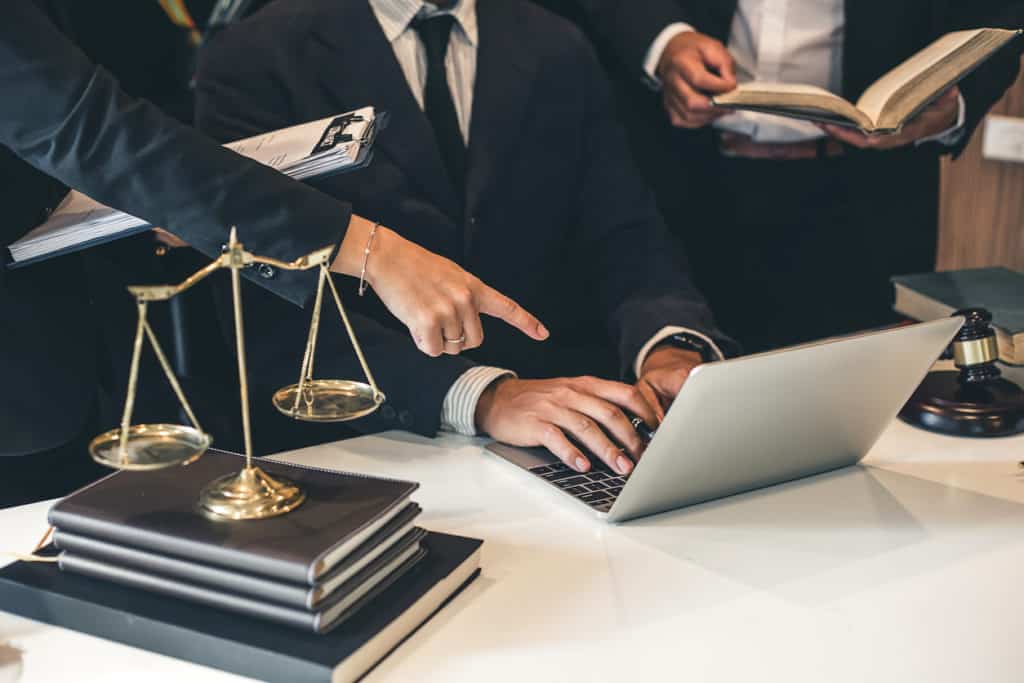Technology in the courtroom is nothing new. It arrived 150 years ago.
Want proof? Today’s two oldest forensic technologies, photography and fingerprint identification, still dominate.
Photography made its first courtroom appearances in the U.S. in the 1870s, followed by the first fingerprint identification and a criminal conviction in Argentina in 1892. Two years later, tech got its first virtual courtroom appearance in American humorist Mark Twain’s book, Pudd’nhead Wilson, in the fingerprint identification of a murderer.
Evidence analysis makes for compelling legal drama, and today’s courtroom is a stage built upon technology. Case management and trial presentation software, video displays, sound systems, stenographic transcription, magnetometers, prisoner restraints, security communications, and accommodations for persons with disabilities all rely on tech. New tech relies on where it’s been. Videotaped testimony, word processing, electronic filing, faxes, copiers, scanning, and document storage were all evaluated and accepted in the interest of a more efficient justice system; all to be replaced by something new and (possibly) more efficient. Think analog recording replaced by digital technology.
Technology grows largely out of imagination but remains “the application of knowledge for practical purposes …” Today’s tech moves so fast, yesterday’s improvements become legacy gear overnight. Stay current? Impossible.
History of technology in the courtroom: Evidence analysis
Both convictions and acquittals result from evidence – physical, testimonial, documentary, demonstrative … too many to list. The constant flow of new forensic technologies tests scientific and legal communities. While technology and science collide in the field and lab, the legal world challenges them in the courtroom in pursuit of justice, be it guilt or innocence. In the U.S., when physical science and the law meet in the courtroom in the form of “expert testimony,” two standards, Frye and Daubert, rule the day depending on the state.

What are “today’s” technology developments in court?
- “Rapid” advancements in DNA profiling already place DNA kits (mostly for beta testing) in the hands of law enforcement officers in the field for quick identification of suspects.
- Innovative research and processes in latent fingerprint detection continue to expand development on difficult surfaces – cloth, bullet casings, evidence in water and saltwater for extended periods, even human skin.
- Traditional and aerial photography, and video documentation merge with advancements in 360-degree photographic (OSCR360), 3-D, laser, and scanning technologies not only for visual evidence presentation, but scene measurements as well. Crime scene investigation, crash reconstruction, and ballistics all benefit.
- Computer analysis, internet tracking, hacking, facial recognition and cellular phone forensics continue to evolve as traditional crimes are pushed aside by cybercrime and privacy issues muddy the legal waters beyond scientific acceptance.
Technological advancements and legal standards question the credibility of previously accepted methods and expert opinions. Bloodstain pattern analysis and crime lab DNA procedures are two examples of older technologies under scrutiny – legal and scientific – bite mark analysis preceding them. When questioning forensic methods and technology, start with the International Association for Identification and the National Institute of Standards and Technology Organization of Scientific Area Committees for Forensic Science.
Courtroom theater
There’s no denying a lot of drama unfolds in the courtroom. Court is life’s ultimate stage because typically someone’s freedom is at stake, as well as justice for victims and society. Presenting cases effectively involves use of electronic media and software solutions. Just like the “man cave,” today’s courtroom players – juries, attorneys, victims, suspects, the public, the media, security – all expect the latest tech. As younger, increasingly tech-savvy generations assume these roles, standards will replace expectations.
Much of that tech requires secure high-speed access to the internet, interoperability of mobile devices, and security. Everything is expected to be wireless, but wired tech and legacy gear like CD/DVD/videotape players remain in place as continual changes in recording and storage media transition. Future courtrooms will be dominated by the “realities” … virtual, augmented, mixed, animated … limited only by judicial acceptance, budgetary constraints, and technological abilities of court personnel. Factor in purchase, installation, training and maintenance costs, software updates and subscriptions, how much tech a courtroom delivers may be limited.
So much tech enters courtrooms, “trial technicians” or “hot seat operators” to run devices and software, assist in case organization and presentation add to both prosecutor and defense attorney planning.
Throughout the history of technology in the courtroom, imagination drives advances in solving crimes and seeking justice. Remote testimony? Already here. Security scanners which detect weapons from a distance? Same. The press, particularly broadcast media in the courtroom? Common in some states.
As history trudges on, credible technology survives judicial and societal scrutiny because “science doesn’t lie.” As for imagination, it doesn’t take much to see where courtroom tech is going.
You’re likely holding it in your hand.